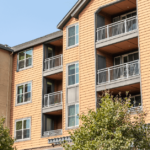The LIHTC programs and rapid rehousing efforts are transforming the affordable housing landscape by creating stable, cost-effective solutions for individuals and families experiencing housing insecurity. By leveraging LIHTC funding, these programs ensure the availability of affordable units while promoting community stability. With expertise in construction and affordable housing, LIHTC programs and rapid rehousing work together to address urgent housing needs. This blog explores the connection between these initiatives and their significant impact on communities.
What Are LIHTC Programs?
The Low-Income Housing Tax Credit (LIHTC) program is a federal initiative designed to increase affordable housing by encouraging private developers to invest in constructing and rehabilitating low-income housing units. These projects are bound by long-term affordability commitments, making them vital to combating housing insecurity.
Key aspects of LIHTC programs and rapid rehousing include:
- Encouraging private sector investment in affordable housing.
- Establishing rent-controlled units for low-income tenants.
- Ensuring compliance to maintain affordability for decades.
How LIHTC Programs Align with Rapid Rehousing
Rapid rehousing focuses on providing temporary assistance, enabling individuals and families to transition into stable housing. By integrating LIHTC funding, developers can create affordable units that support rapid rehousing efforts effectively.
Key Contributions of LIHTC to Rapid Rehousing:
- Increasing Housing Supply: LIHTC projects generate a sustainable inventory of affordable units for vulnerable populations.
- Minimizing Barriers: Affordable rental rates help low-income tenants transition to permanent housing.
- Enhancing Stability: Access to safe, long-term housing improves community outcomes.
Affordable Housing Initiatives in Action
The success of affordable housing initiatives relies on the collaboration between the public and private sectors. LIHTC-funded projects exemplify this partnership by:
- Addressing the gap in affordable housing availability.
- Ensuring developments meet quality standards.
- Promoting neighborhood revitalization through mixed-income housing.
To strengthen these initiatives, sustainable building practices and efficient construction methods are often implemented. Utilizing modern techniques like cost analysis, detailed scheduling, and project management ensures the timely delivery of housing projects that meet affordability goals.
Rehousing Support: A Path to Stability
Rehousing support focuses on providing comprehensive assistance to individuals transitioning from homelessness. This includes:
- Short-term rental subsidies to ease the financial burden.
- Housing navigation services to secure suitable accommodations.
- Case management to address underlying challenges and foster independence.
These efforts align seamlessly with LIHTC projects, as the affordability component ensures a long-term solution for tenants in need of housing stability.
LIHTC Funding: The Backbone of Affordable Housing
LIHTC funding enables developers to construct affordable units while reducing financial strain on tenants. These tax credits incentivize lihtc developers to prioritize low-income housing, ensuring resources are allocated efficiently.
By connecting LIHTC programs and rapid rehousing, stakeholders can create a sustainable framework for combating homelessness. The focus remains on developing high-quality, affordable housing that empowers communities and strengthens social support systems.
Stability Through LIHTC Programs
The synergy between LIHTC programs and rapid rehousing highlights a sustainable approach to addressing housing insecurity. Through affordable housing initiatives, rehousing support, and the strategic use of LIHTC funding, communities can benefit from increased stability and opportunity. For more information on how innovative construction practices can shape the future of affordable housing, contact us today.










